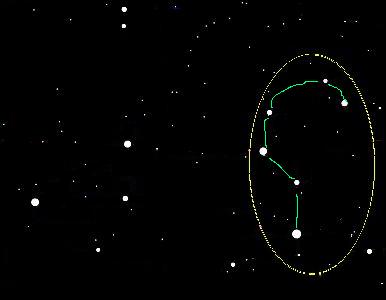The Leonid meteor shower in 2024 will be active from November 6th to 30th, peaking around November 17th or 18th. Unfortunately, a waning gibbous moon will be present during the peak, significantly impacting visibility due to its brightness.
Despite the moonlight interference, observers might still be able to catch some Leonids, especially the brighter ones. The best time to view them would be in the hours after midnight and before dawn when the radiant point (the constellation Leo) is higher in the sky.
Key points for viewing the Leonid meteor shower in 2024
- Active period: November 6th to 30th
- Peak: November 17th or 18th
- Challenge: Significant moonlight interference
- Best viewing time: After midnight until dawn
- Radiant point: Constellation Leo
The Comet Tempel-Tuttle is the parent body of the Leonid meteor shower. In 1699, it was observed by Gottfried Kirch but was not recognized as a periodic comet until the discoveries by Tempel and Tuttle during the 1866 perihelion.
Where should I look for the Leonid meteor shower?
The meteors will appear to come out of the constellation Leo. The easiest way to find Leo is to look for a backwards question mark shaped constellation in the Southern sky (circled below).

To best watch the Leonid meteor shower in 2024, follow these tips:
- Timing: The Leonid meteor shower in 2024 peaks on the mornings of November 17th and 18th, but you can also try watching a few days before or after. The best viewing time is typically between midnight and dawn when the radiant point (the constellation Leo) is higher in the sky.
- Location: Find a dark location away from city lights. Light pollution drastically reduces the number of meteors you can see. Rural areas or parks away from urban centers are ideal. Check for clear skies using weather forecasts and apps.
- Comfort: Dress warmly and bring blankets or a reclining chair for comfortable viewing. November nights can get chilly. Consider bringing snacks and drinks to stay energized during your meteor-watching session.
- Patience: Allow at least 30 minutes for your eyes to adjust to the darkness. Lie back and look up at the sky, taking in as much of it as possible. Don't focus on the radiant point; meteors can appear anywhere in the sky.
- Moon Awareness: In 2024, a waning gibbous moon will be present during the peak, impacting visibility. Try to watch before the moon rises or look for meteors away from the moon's glare.
- No Equipment Needed: You don't need telescopes or binoculars to watch meteor showers. Your naked eyes are the best tools for seeing the wide field of view necessary to catch these fleeting streaks of light.
- Enjoy the Experience: Relax and enjoy the beauty of the night sky. Even if you don't see many meteors, stargazing is a wonderful way to appreciate the vastness of the universe.
Can I seen the shower if I live in a city?
While the best place to watch is in a dark location you should be able some of the brighter meteors from the city. To find a good location you can check out our light pollution maps.
More Meteor Facts
Meteoroids are the debris sloughed off from comets. When they reach the Earth's atmosphere and burn up, they are referred to as meteors; otherwise known as shooting stars. Those that hold together and actually reach the Earth's surface are known as meteorites.
It was once calculated that the Comet Swift-Tuttle was on a collision course with Earth, suggesting that an impact was likely to occur in the year 2026. That theory was quickly debunked as recalculations of the nearly dual century data showed differently. The new theory is that in the year 3044, the Comet Swift-Tuttle will brush by within a million miles of the Earth, considering this future event to be a true 'cosmic near miss' by astronomers.
The Leonids have not only produced some of the best meteor showers in history, but they have sometimes achieved the status of meteor storm. During a Leonid meteor storm, many thousands of meteors per hour can shoot across the sky. Scientists believe these storms recur in cycles of about 33 years, though the reason is unknown.
The biggest meteor shower in known history was the Leonid meteor storm of 1833. During its peak, observers reported seeing tens of thousands of meteors per hour, with some estimates reaching up to 200,000 per hour. This spectacular event was so intense that it was likened to a snowstorm of stars, leaving a lasting impression on those who witnessed it.
